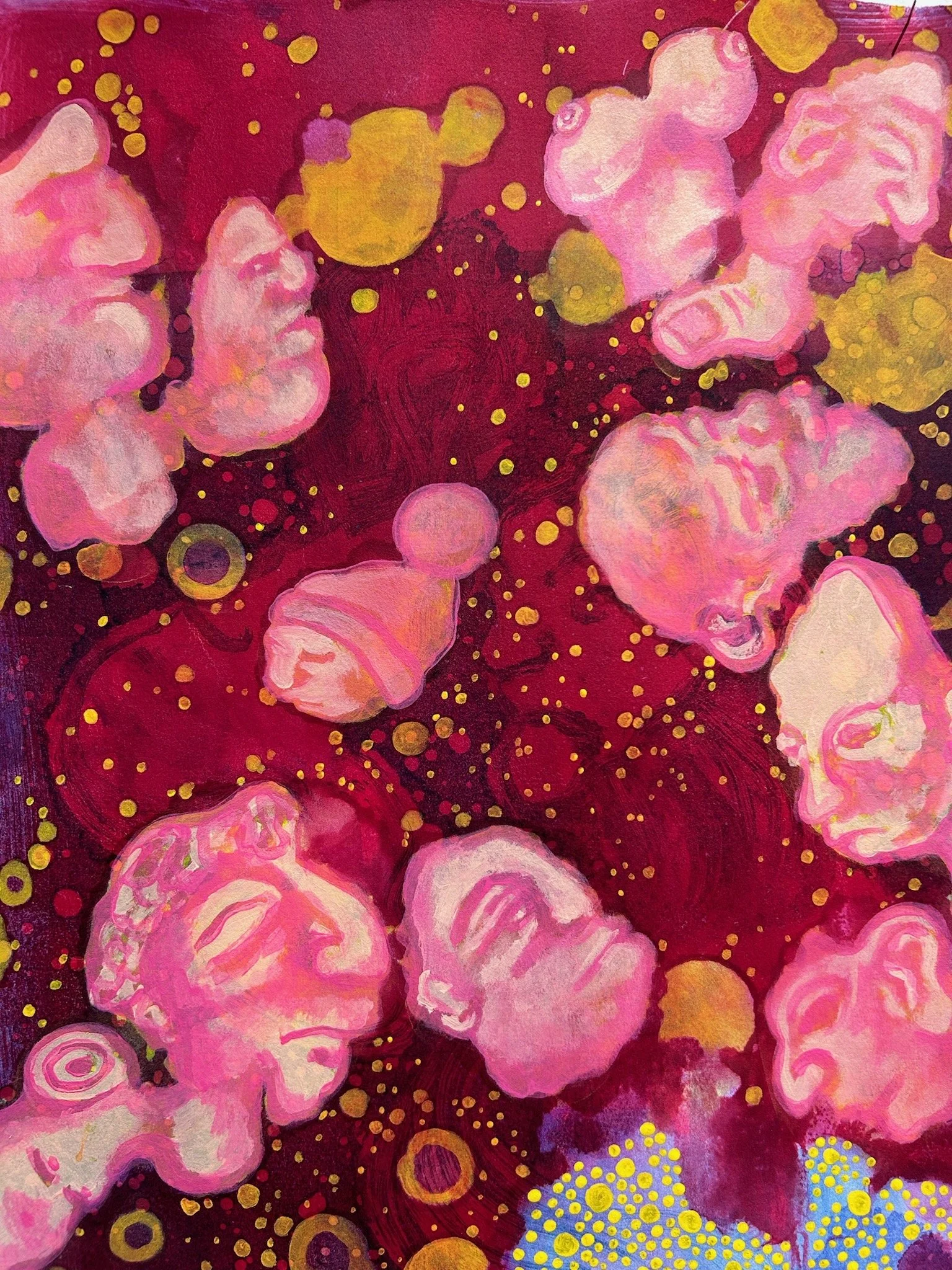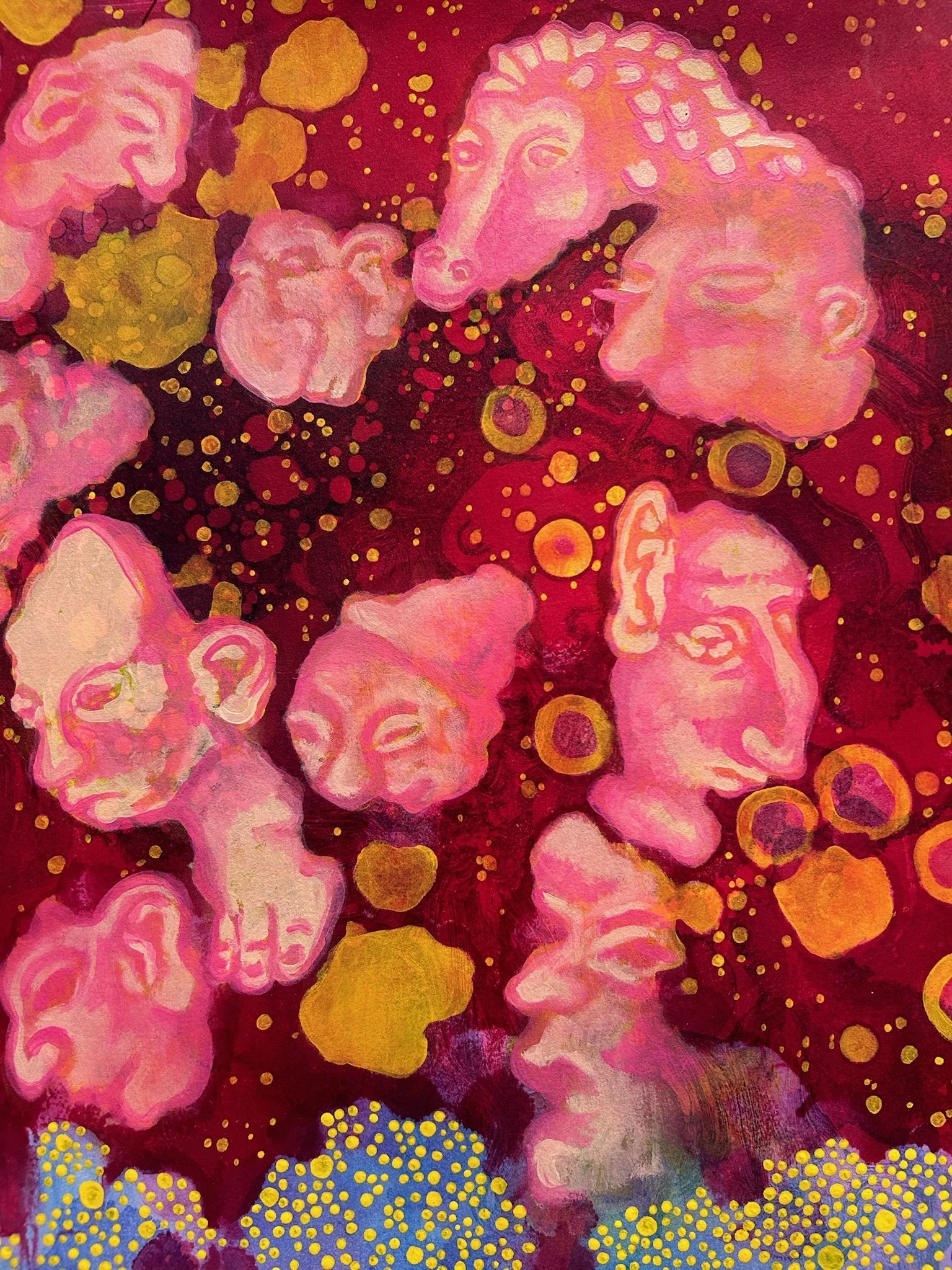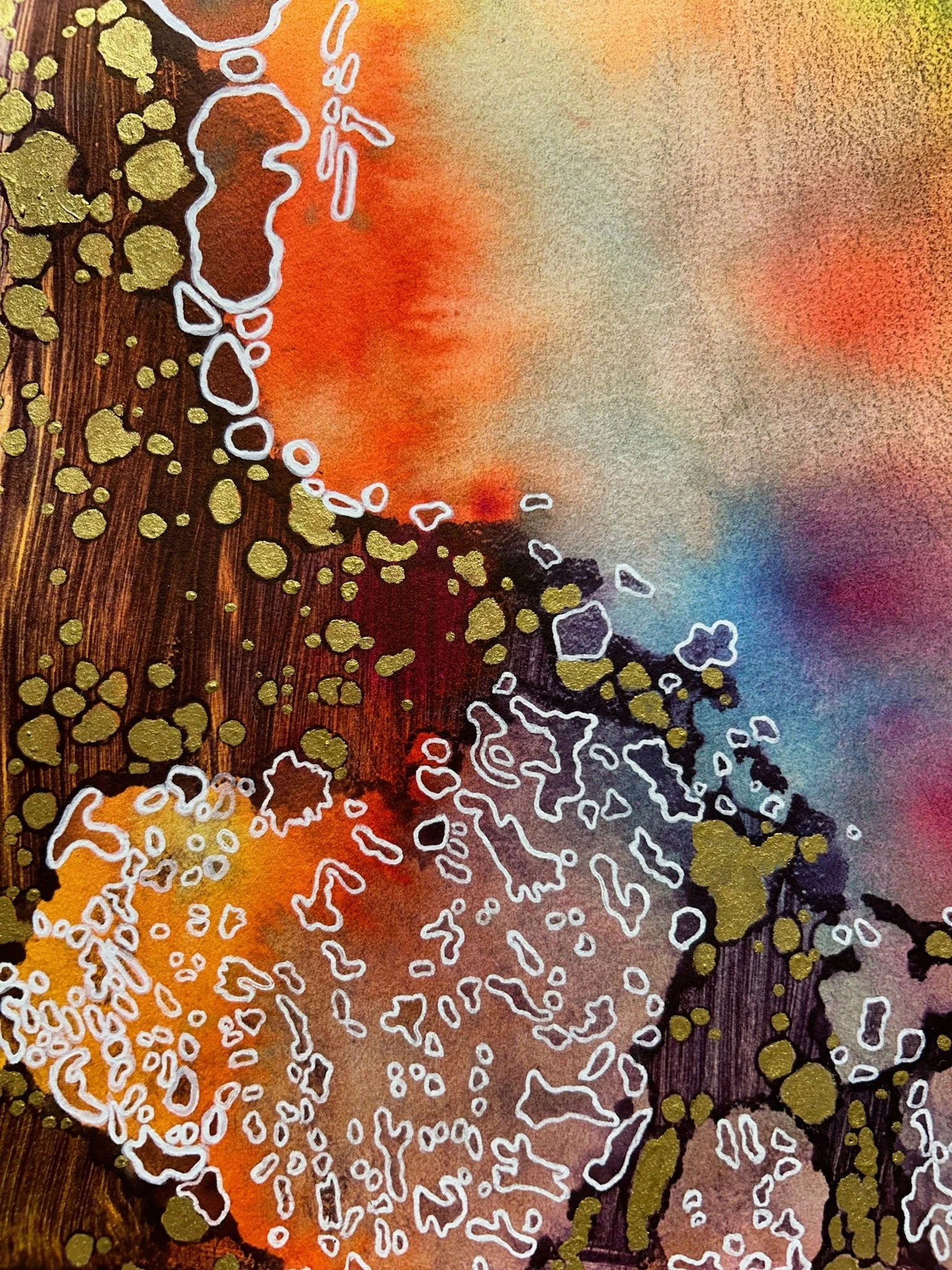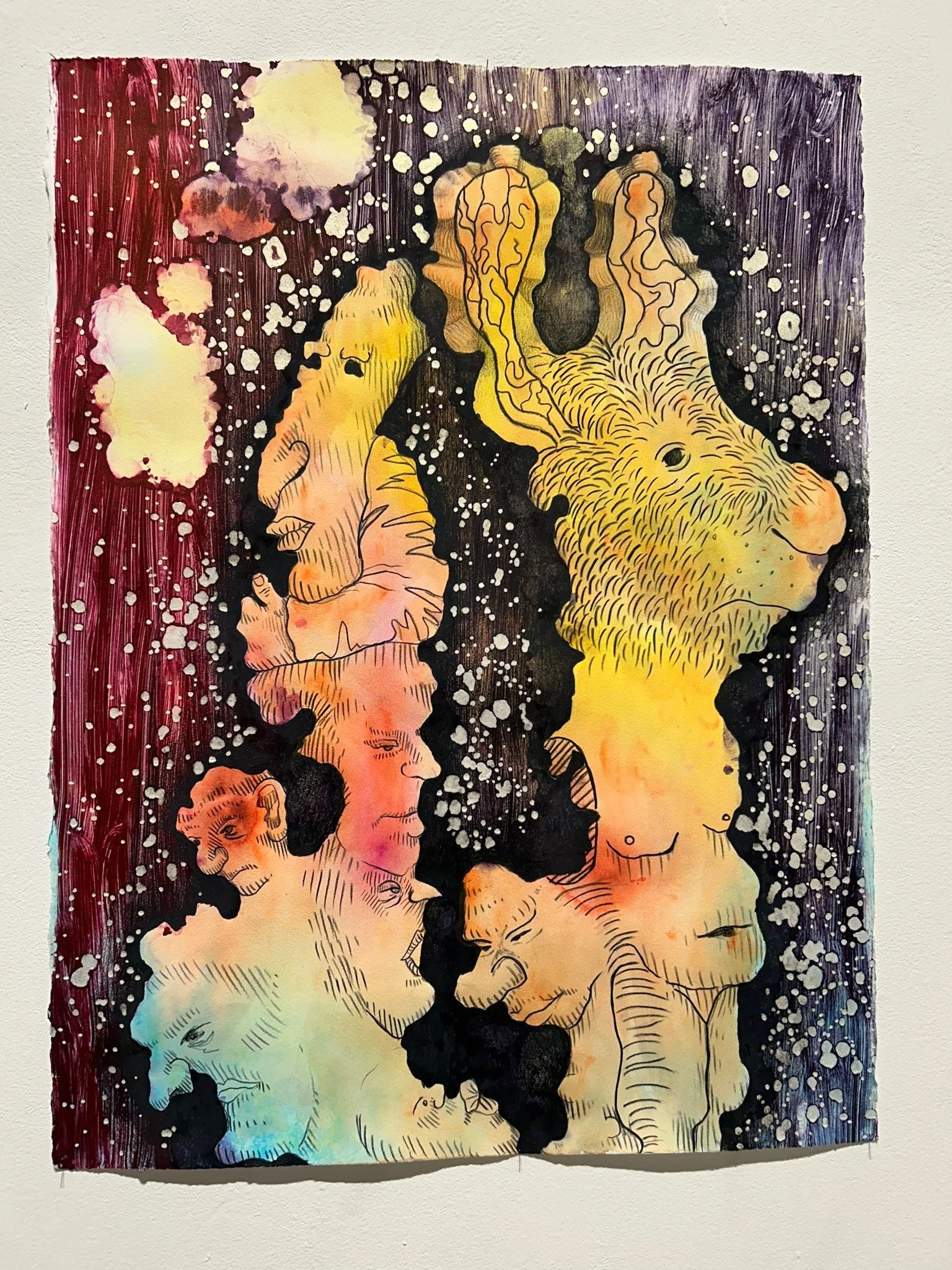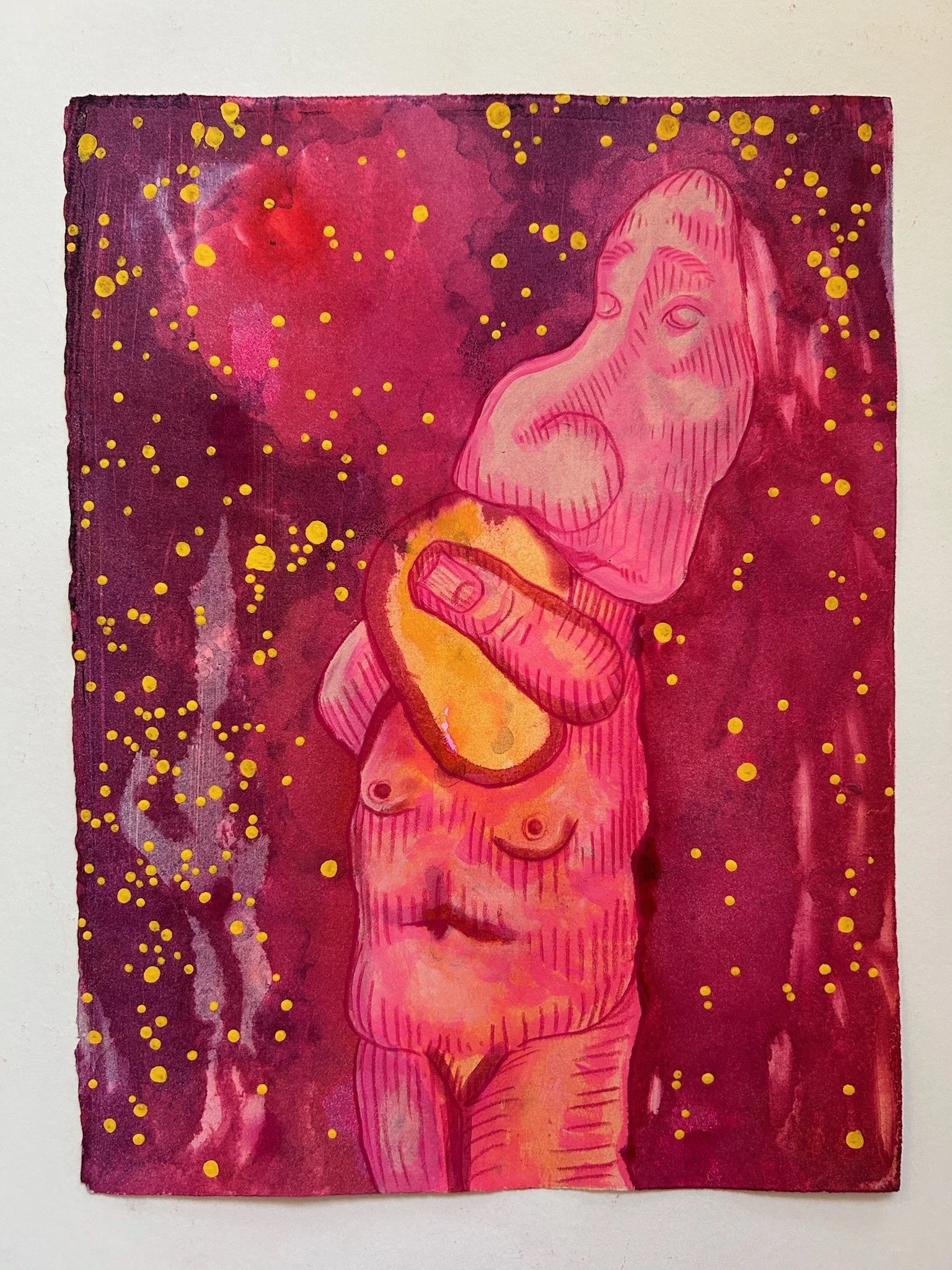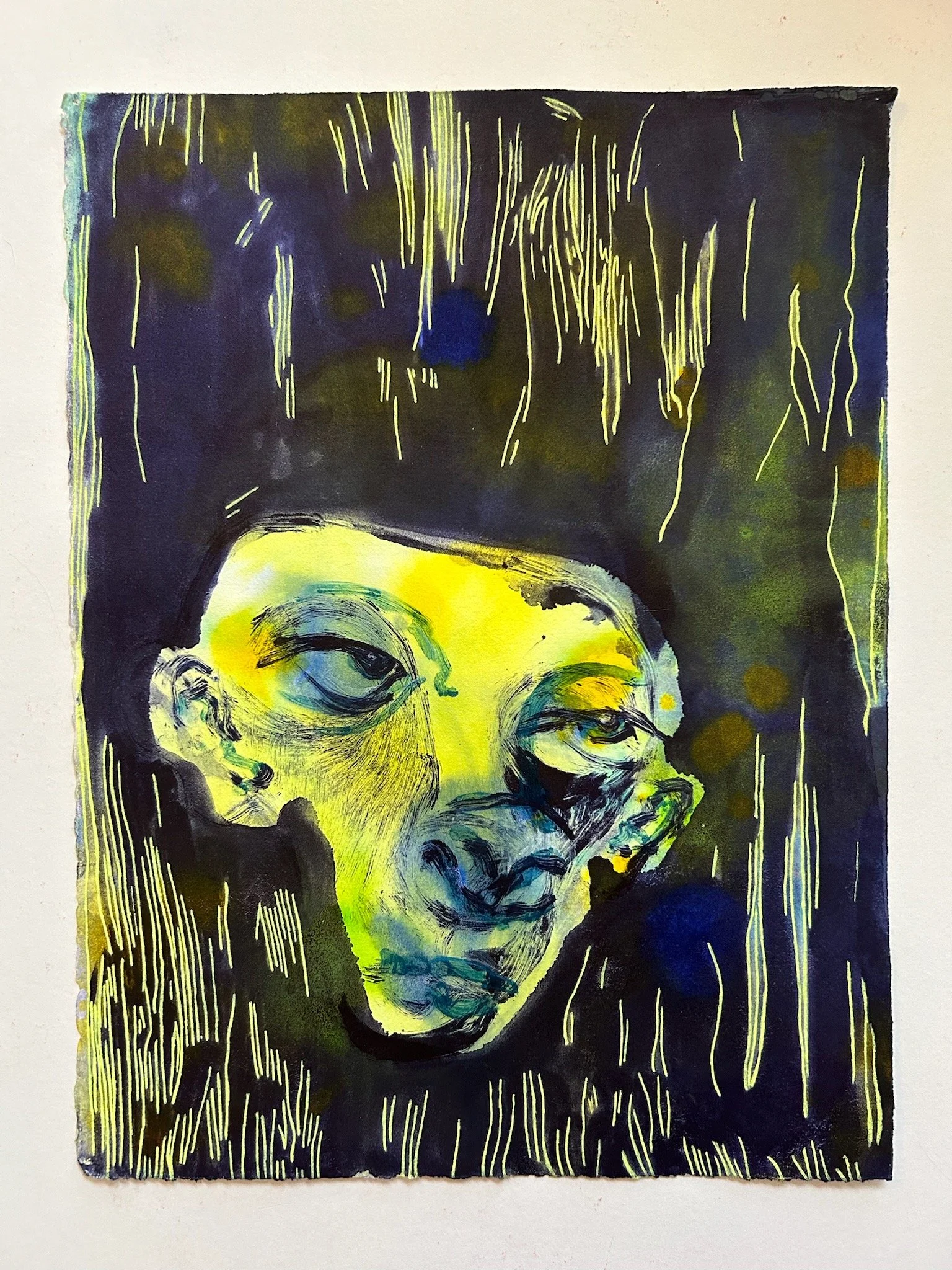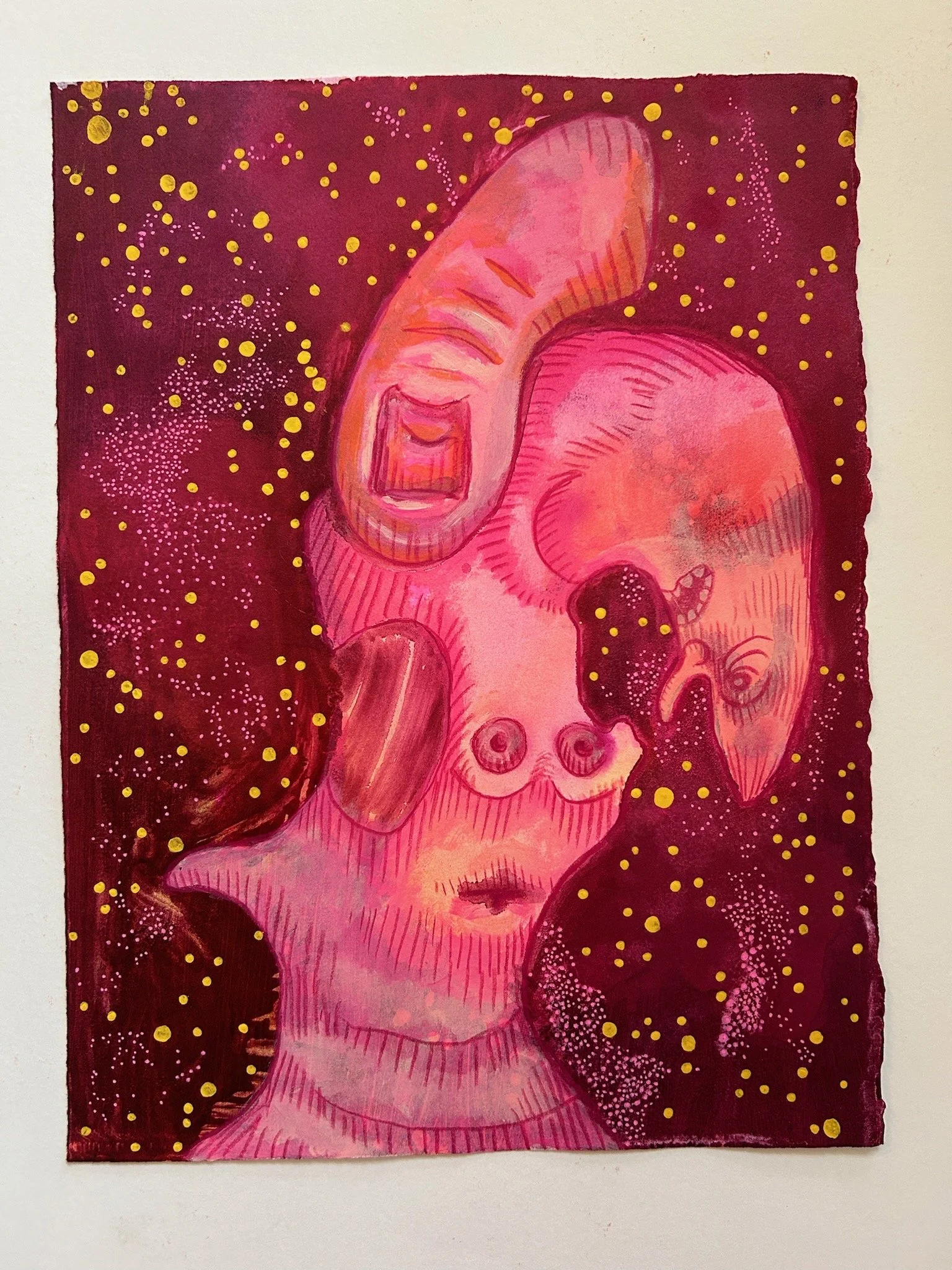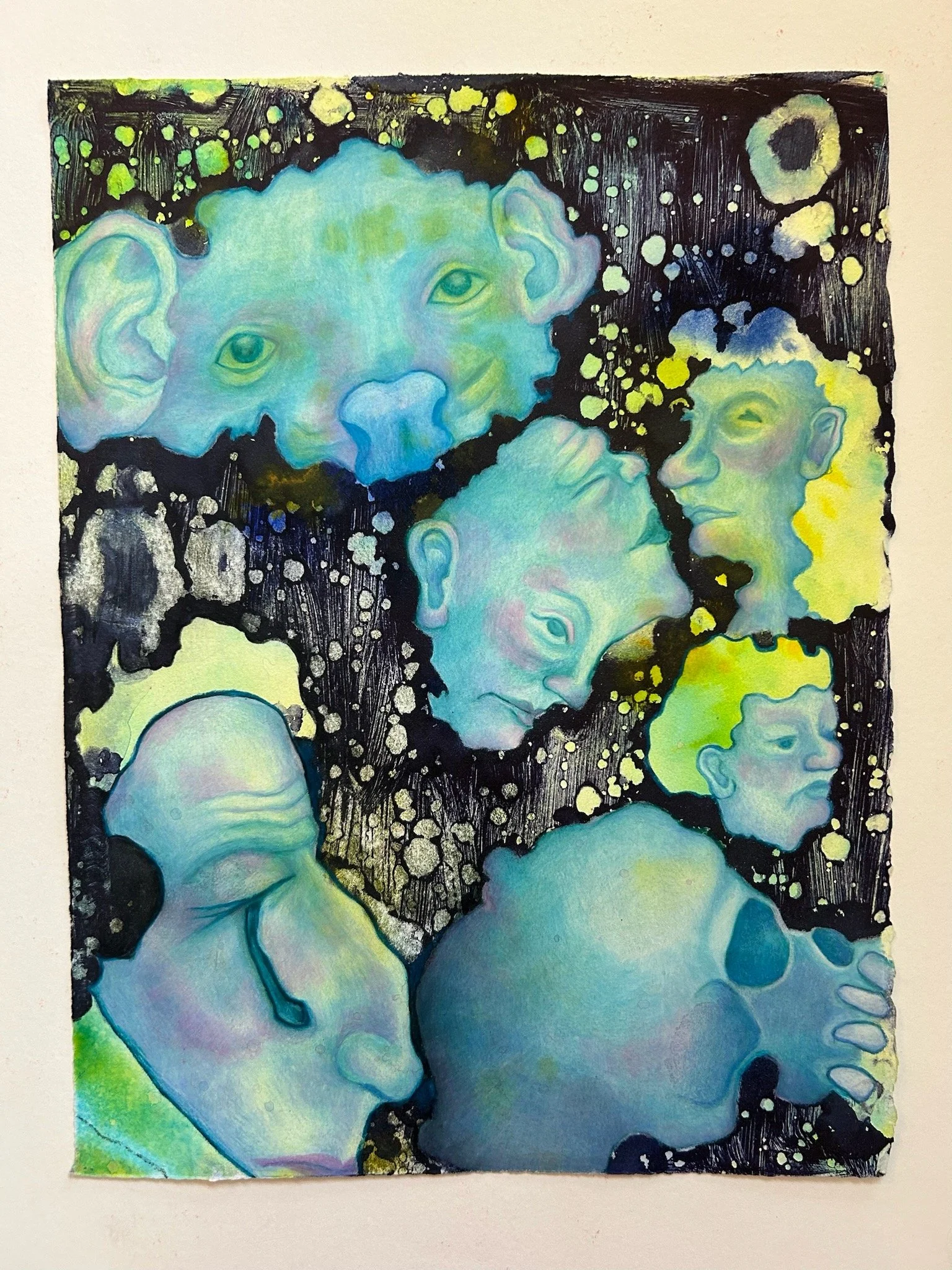The BFA Thesis Exhibition is the culmination of the BFA degree at the University of Alabama. It is a joint show between all BFA candidates across all mediums of Studio Art and is held in the Sella-Granata Art Gallery in Woods Hall at the University of Alabama. Students are responsible for creating, curating, installing, and deinstalling their own work. They are also responsible for the advertising of the show through the creation and distribution of showcards. While the show is up, each candidate must appear before the Art Department faculty and defend their thesis in order to receive their degree.
Artist Statement
This body of work is an exploration of various printmaking and drawing processes and the interactions possible between different materials. This exploration is supported by the incorporation of automatic drawing methods which access the space in-between abstraction and figuration. By working in this space, I allow viewers the freedom to look for what they need to see whether I have outlined it or not. This method creates a collaboration between artist and viewer that brings the meaning of the work beyond my own intentions. Within this body of work, I am engaging with art as an investigative, process-based activity. My main lines of inquiry are in shape, layering, composition, color, texture, chance, and control.
Printmaking is a necessary part of my process as it provides the framework or initial response points for the development of the work. It is also necessary because repeatable or similar layers allow me to more easily recreate layers I find successful as I develop imagery and order of operations. Each piece has at least one layer of monotype embedded in layers of drawing, although the order in which these layers occur changes from piece to piece. Much of the work revolves around finding a balance between chance and control through the alternation of process and response layers. Monotype allows more spaces for chance to enter the work because of the intermediary relationship the press offers between the hand of the artist and the final melding of the ink with the paper. I am directly using the properties and interactions of ink, solvents, and other additives in the creation of imagery and building of the work’s architecture. I have a general understanding of the effects that will be produced, but there is always a level of unpredictability once the work goes through the press due to the indirect nature of the transfer process. I also incorporate chance through layers of colorful inks applied in a wet on wet technique; this is the only time drawing is used as a process layer and not a response layer.
Once I establish chance-based layers, I use automatic drawing and embellishment to regain control. I view automatism as process-based because it directly relies on the properties and manipulation of the materials in the layer before. It is responsive, and the figures that arise are a way of solving problems regarding composition. There is no planned intent or content before the work starts. The imposition of narrative or sorting of the relationships between the figures comes after the fact, which reveals tendencies of the artist and the audience based on the conclusions they draw. The embellishment, or use of small dots and thin lines that surround the figures, is also responsive. I create these marks based on the textures in the layers before; this is often brushstrokes, blank spots left behind by solvent, or sediment from the drying of ink applied on wet paper.
Even though I do not plan the imagery for my work, there are certain motifs and a distinct sense of oddity that arise and raise questions. In trying to understand my own tendency toward these things, I was led to the Chicago Imagists as they also frequently distort the human form. It is said that “many of the Imagist artists had a taste for the grotesque, and images of monstrosity, deformity, disease, and injury are scattered throughout their work…Jim Nutt’s early work frequently contained cartoonish depictions of violent mutilation, misplaced genitalia, and grimacing faces-scattered grotesque imagery with an impish sense of humor not unlike that of Medieval marginalia.”[1] While the Imagists often emphasize violence and gore, my work is not this graphic; although there are several beings who are missing arms, there is no wound. The skin has grown over the area, indicating they were either born with the limb missing or are many years removed from the violence of the loss. This is one way in which my distortion functions differently than that of the Imagists; while we are both concerned with oddity and disfiguration, I am more focused on oddity for its own sake or the curiosity it invokes rather than the shocking effects violence, gore, and the grotesque can have on an audience. Many of the Imagists had a reason for these depictions, such as finding them beautiful, highlighting marginalization because of deformity, or as a metaphor for social issues. While these are all interpretations that could also be applied to my work, my reasoning is more aligned with Jim Nutt, who said “he didn’t know from where in his subconscious the bizarre figures in his early work came…”. Ultimately, my draw to distortion comes from a “general desire to seek out ideas from beyond society’s mainstream, creating an ideal environment for the aesthetic appreciation of a variety of odd, grotesque, and unpleasant things.”
Monotype and acrylic on Rives BFK, 22"x30"
Detail Image
Detail Image
Monotype, acrylic, ink, and colored pencil on Rives BFK, 22"x30"
Detail Image
Detail Image
Detail Image
Monotype, acrylic, ink, and colored pencil on Rives BFK, 22"x30"
Monotype, acrylic, ink, and colored pencil on Rives BFK, 22"x30"
Detail Image
Monotype, acrylic, ink, and colored pencil on Rives BFK, 22"x30"
Detail Image
Monotype, acrylic, ink, and colored pencil on Rives BFK, 22"x30"
Detail Image
Monotype, acrylic, ink, and colored pencil on Rives BFK, 22"x30"
Detail Image
Monotype, acrylic, and ink on Rives BFK, 22"x30"
Detail Image
Detail Image
Detail Image
Detail Image
Monotype, acrylic, and ink on Rives BFK, 11"x15"
Monotype, acrylic, ink, and colored pencil on Rives BFK, 11"x15"
Monotype, acrylic, and ink on Rives BFK, 11"x15"
Monotype, acrylic, and ink on Rives BFK, 11"x15"
Monotype, acrylic, ink, and colored pencil on Rives BFK, 11"x15"
Monotype, acrylic, ink, and colored pencil on Rives BFK, 11"x15"
Monotype, acrylic, ink, and colored pencil on Rives BFK, 11"x15"


